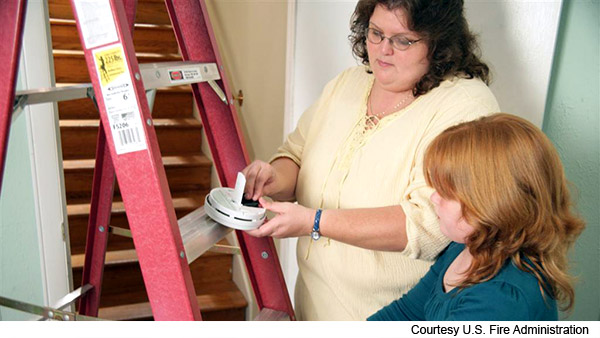Better fire protection and materials design – along with more education – have combined to save lives and reduce financial losses from fires. In fact, due to the increased knowledge of fire protection and prevention, the number of U.S. fires over the last 25 years has been reduced by half.
Education starts early. National Fire Prevention Week, celebrated in October each year, is a great opportunity for you and your children or grandchildren to have fun while learning important fire safety precautions.
A first step is to install properly placed, working smoke alarms in every home. Automatic detection and smoke alarms in homes have had a big impact on the improved fire safety numbers, cutting the risk of dying in a home fire by more than half. To reap the benefits of early detection, it is essential to maintain and test smoke alarms to ensure they are in proper working order in the event of a fire.
The National Fire Protection Association features Sparky, the fire dog, on sparky.org, where you’ll find activity sheets, puzzles, games, music videos and safety checklists appropriate for a variety of ages. Sparky’s page offers a smoke alarm safety sheet and calendar to remind your family to test your smoke alarms monthly.
Kids can use the safety checklist to explore other fire safety measures in place in your home. Try your luck at finding smoke alarms and batteries in the smoke alarm hidden picture. The site also features electronic games. Sparky even offers resources to parents and teachers with instruction sheets, classroom lesson plans and craft projects.
Parents can get more information about smoke alarm selection, placement or testing by visiting NFPA’s consumer page.
Share these fire prevention techniques with the important people in your life, and increase their chances of surviving a fire.
This loss control information is advisory only. The author assumes no responsibility for management or control of loss control activities. Not all exposures are identified in this article.

